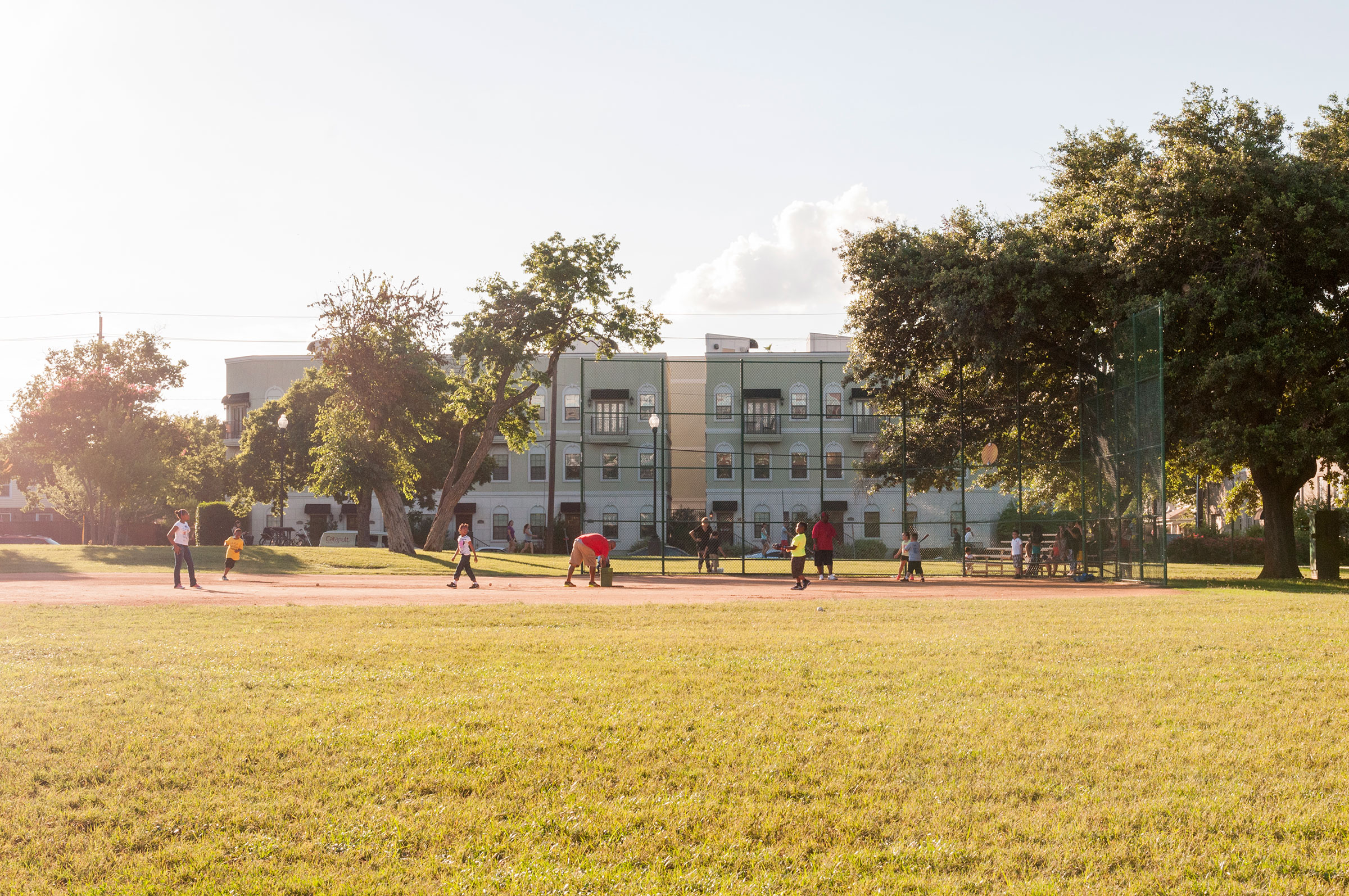I feel incredibly lucky to live in Old East Dallas—where the architectural heritage is so varied and rich that that it inspired me to write A Field Guide to American Houses, thus changing my life; where the neighbors are so talented and dedicated that they banded together to save Swiss Avenue and, by forming the advocacy group Preservation Dallas, helped establish a multitude of other historic and conservation districts and neighborhood groups; and where I never have to drive on a freeway to enjoy the best of Dallas—and were I a bit more nimble I could skip the car and simply bike.
One hundred and twenty-five years of construction have produced an extraordinary collection of home shapes, sizes, and styles. Indeed, the soul of Old East Dallas is its historic districts—each with its own unique mixture of houses. Swiss Avenue (part of the exclusive Munger Place development that first opened in 1905) was Dallas’ first historic district, and today its mile-long landscaped median serves as the Town Green of Old East Dallas. A seemingly endless parade of baby strollers, bikes, dogs, joggers and walkers pass by its impressive homes daily. Smaller scale Bryan Parkway runs parallel and flaunts a delightful collection of Craftsman bungalows that as one moves up the street toward Lakewood, gradually evolve into the period houses of the 1920s. LaVista displays a superb collection of Tudor houses, while the small portion of Live Oak included in the District has some excellent Colonial Revivals and a turn-of-the-century home moved from Bryan Place.
I had no idea how much I treasured the street activity until I lived in North Dallas for several years—on a cul-de-sac with no sidewalks and with rear entry garages. It’s quiet, said the real estate agent, and I did not question her wisdom. But after moving in, I realized that when I walked out in front, there were no joggers or strollers. Cars did not drive by. It was quiet–but also sterile and even lonely. The sense of loss was immense. I could hardly wait to get back to the street parade.
Growing up in East Dallas, I was fascinated by how different the houses were in areas just a block or two apart. To get to grade school, I walked past a block of one-story brick cottages. To buy a candy bar after school, we all walked to a corner store in the midst of one-story wood bungalows. Driving downtown along Swiss Avenue to pick up my father from work each day, I would keep my eyes peeled for two groups of intriguing wood houses with fancy wrap-around porches and wondered why they were so unusual.
My best friend lived in a picturesque area of two-story wood houses with broad front porches. She lived in what we now call Munger Place, a historic district (and part of the same 1905 Munger Place development as Swiss) jam-packed with sturdy Four-Square houses, most in the Prairie, Neoclassical and Craftsman styles. Next door, Junius Heights—the largest historic district in Dallas—bursts with one-story cottages, including wood-clad Craftsman bungalows, stucco Spanish Revival and brick Tudor, Colonial Revival, and even Italian Renaissance cottages. My grade school, William Lipscomb, sat right in the middle.
And as for the gingerbread houses with the high-pitched roofs—these nineteenth century Queen Anne treasures are in OED’s two oldest districts: Peaks Suburban Historic District, where I once lived, has a wonderful mixture of housing types and styles that span from nineteenth century Queen Anne’s to handsome infill New Period Houses. And the Wilson Blocks—a group of nineteenth century Queen Anne houses in the 2800 and 2900 blocks of Swiss—is owned by the Meadows Foundation that provides meticulous care for them and uses these handsome “painted ladies” to provide a home for many non-profits.
Newer developments include Cochran Heights, a 1930s split-level neighborhood next door to Knox-Henderson, and Bryan Place, a 1980s small-scale intown suburb developed by Dave Fox adjacent to downtown Dallas. Vintage 1950s garden apartments are being updated along Live Oak and Gaston to include modern touches like feng shui-inspired gardens. Next to Junius Heights a large CitiHomes development was completed in 2007 and sold out within the year, and next door on Tremont is Dallas first “pocket neighborhood”—a picturesque grouping of four single family homes and four duplexes surrounding an elliptical central garden. And new apartments are still being added in Bryan Place and close to Central.
This astonishing variety of homes has attracted an equally amazing mixture of neighbors. Young and old, black and white, Hispanic and Asian—I know of no broader mix of residents anywhere in the city. Old East Dallas was originally developed to provide homes for a full spectrum of people — from the president of Magnolia Oil (today’s Mobil Oil) to the founders of Neiman Marcus, from the Higginbotham brothers to railroad workers and gardeners. Today’s residents are as varied. Musicians and artists, professors and principals, writers and editors, secretaries and salesmen, trial attorneys and politicians —a complete range of professionals, artists, and service personnel live here—the same broad mix of people and place that has always made living in Old East Dallas a daily adventure.
On top of it all, Old East Dallas sits in is a phenomenal location. In and around our neighborhoods are picturesque groupings of trolley-stop storefronts, and early automobile shopping areas filled with restaurants, bars and shopping. We are bounded on the west by Downtown Dallas and the Arts District; on the north by Uptown, West Village, and Highland Park; on the east by Knox-Henderson, Lower Greenville (with its many neighborhoods) and Lakewood, and on the south by Deep Ellum and the Santa Fe Trail. To the north, one can follow the Katy Trail and Turtle Creek from the American Airlines Arena out to Mockingbird Station and beyond. On the south the Santa Fe Hike and Bike Trail leads to White Rock Lake and the Arboretum and will expand to include Fair Park and the Farmer’s Market. And since NorthPark, arguably the nation’s finest mall, is just a short drive, we don’t have to tackle freeways or tollroads for some of the country’s best shopping.
What is truly wonderful is that those of us who live in Old East Dallas love our community. We are proud of our part of the city. We drive, walk and bike its streets and seek out its shops and restaurants. And while we may fiercely protect the past, we also work hard to plan for the future.
Virginia Savage McAlester is an architectural historian and preservationist best known for her book A Field Guide to American Houses, a standard guide to American home styles. She’s spent more than 50 years living in Old East Dallas.




